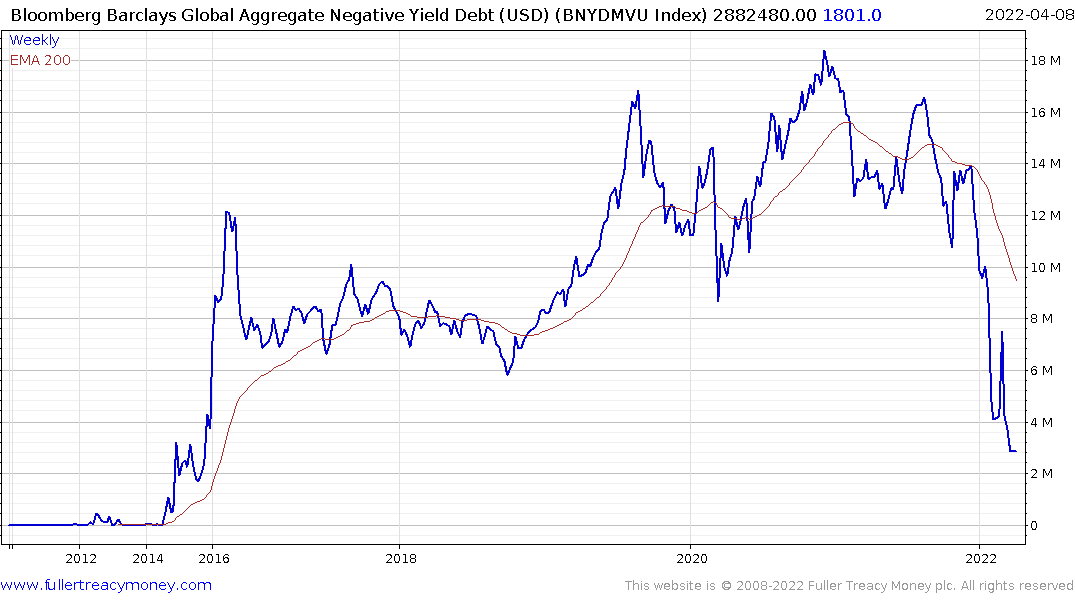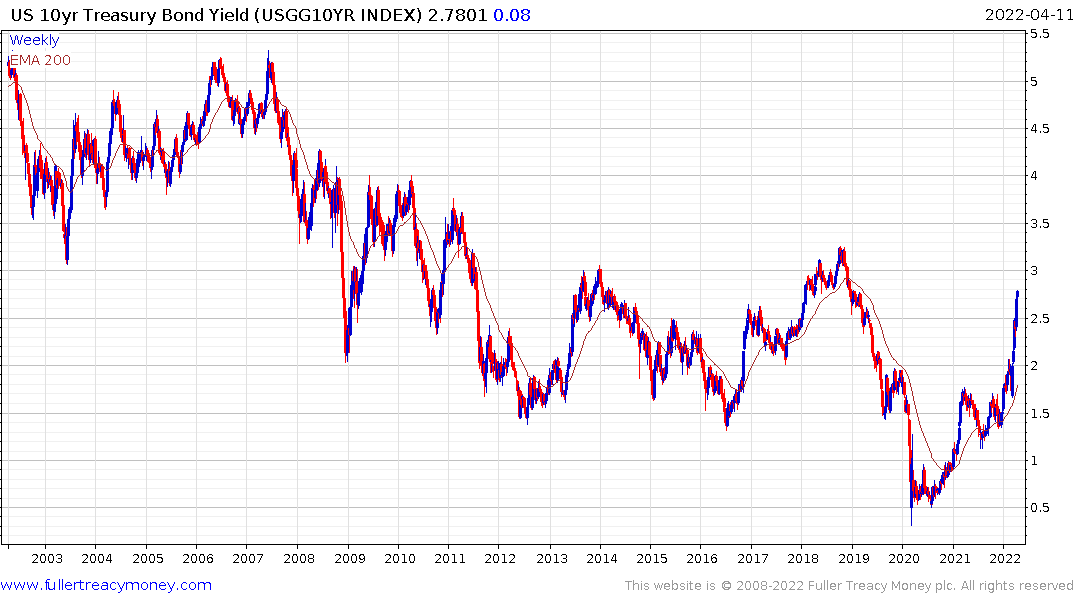Pension Funds' Billions Loom as Force to Cap Long-Term Yields
This article from Bloomberg may be of interest to subscribers. Here is a section:
The unmooring of long-term Treasury yields just keeps gaining momentum. Yet there’s a wall of corporate cash lurking on the sidelines, which could curb further bond losses.
Demand from pension funds “should help cap the path of long-end rates ultimately,” Shahid Ladha, head of Group-of-10 rates strategy for the Americas at BNP Paribas SA, told Bloomberg Television Monday. “In terms of their appetite and possible support to U.S. fixed income, we have seen an average of $10 billion a quarter or $40 billion a year.” However, demand this month has been below average -- so it has room to pickup, he added.
Ten-year U.S. rates climbed through 2.75% Monday for the first time since March 2019, following a wave of rising yields in Europe as traders intensified global bets on aggressive rate hikes from major central banks. While benchmark rates may climb even higher, likely breaking above the 3%, demand for Treasuries will probably resurface, Ladha said.
When there was $17 trillion in negative yielding debt very few investors were worried about the surety of long-term losses. They were too interested in short-term momentum driven gains to give much thought to the long-term.

Now that prices are falling quickly, and a deep oversold condition is evident they only focus on the threat to long-term returns from a spike in inflation. There has been speculation inflation is peaking on repeated occasions over the last 12 months, so traders are now in a show-me mood.
At some stage bond value investors will return to scoop up higher yields. A catalyst for demand to return is required to spur action and pressure shorts.
Bonds perform well when investors worry about economic contraction. The most debated question in the inflation world today is between the competing influences of supply versus demand driving price rises.
There is no simple answer but quantitative tightening sucks liquidity out of the global economy. On both occasions it has been attempted deflationary fears ramped higher. It gives credence to the argument inflation is only a monetary phenomenon. The price pressures we are dealing with are therefore less about supply disruption and more about demand surges.
That’s the primary rationale for the Fed’s doubling of the pace of quantitative tightening beginning next month. They know it causes deflation. When both the ECB and Fed tried it in the past, yields initially surged because of the loss of a key source of demand and later collapsed as fears about economic contraction and deflation created new demand.

The first clear downward dynamic is likely to mark a peak of medium-term significance for bond yields if the current trajectory for quantitative tightening remains intact.


